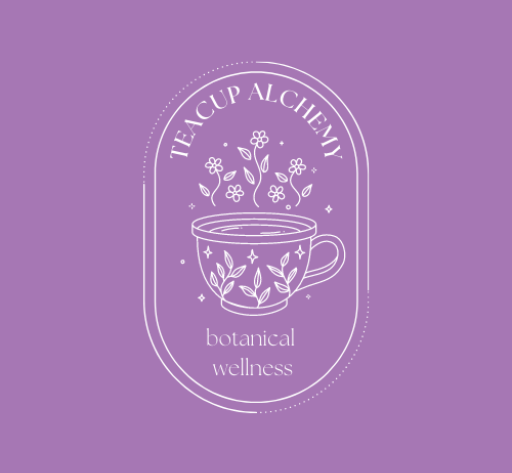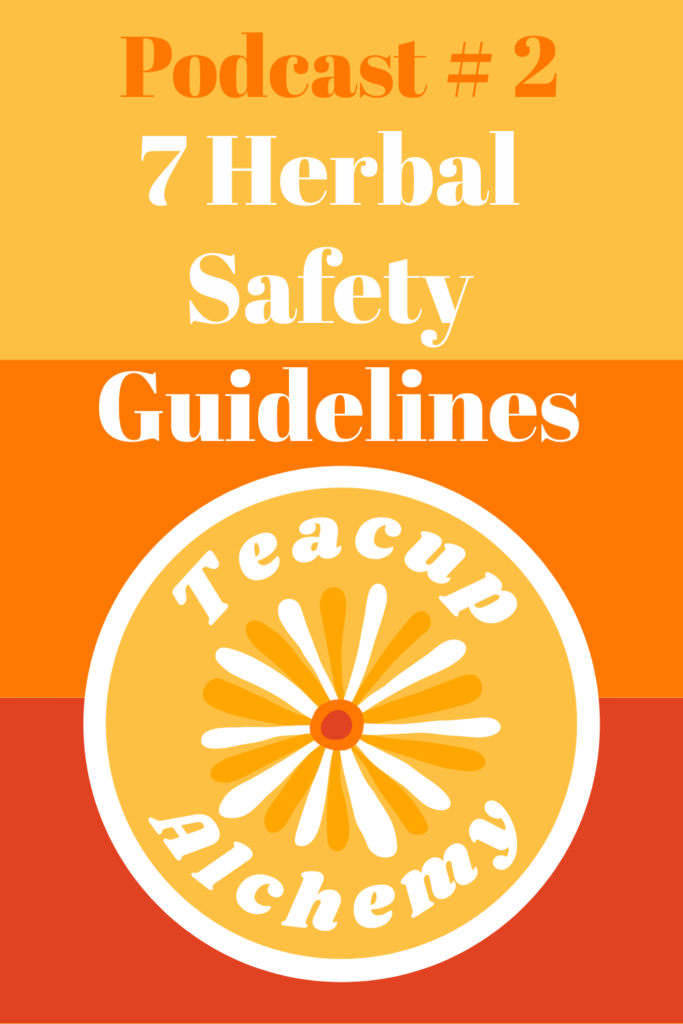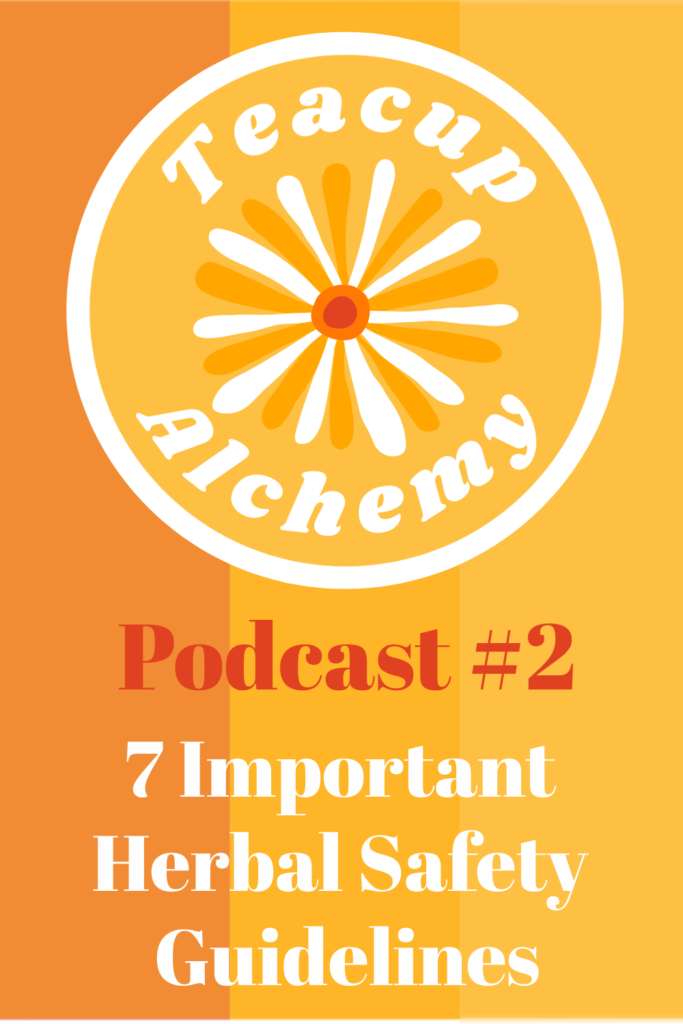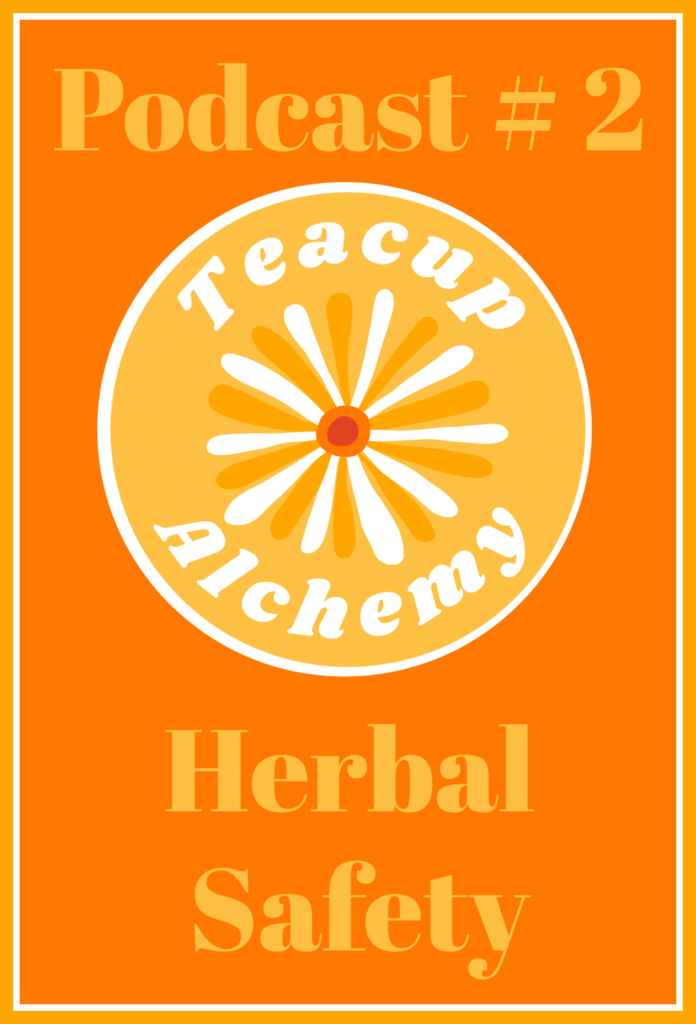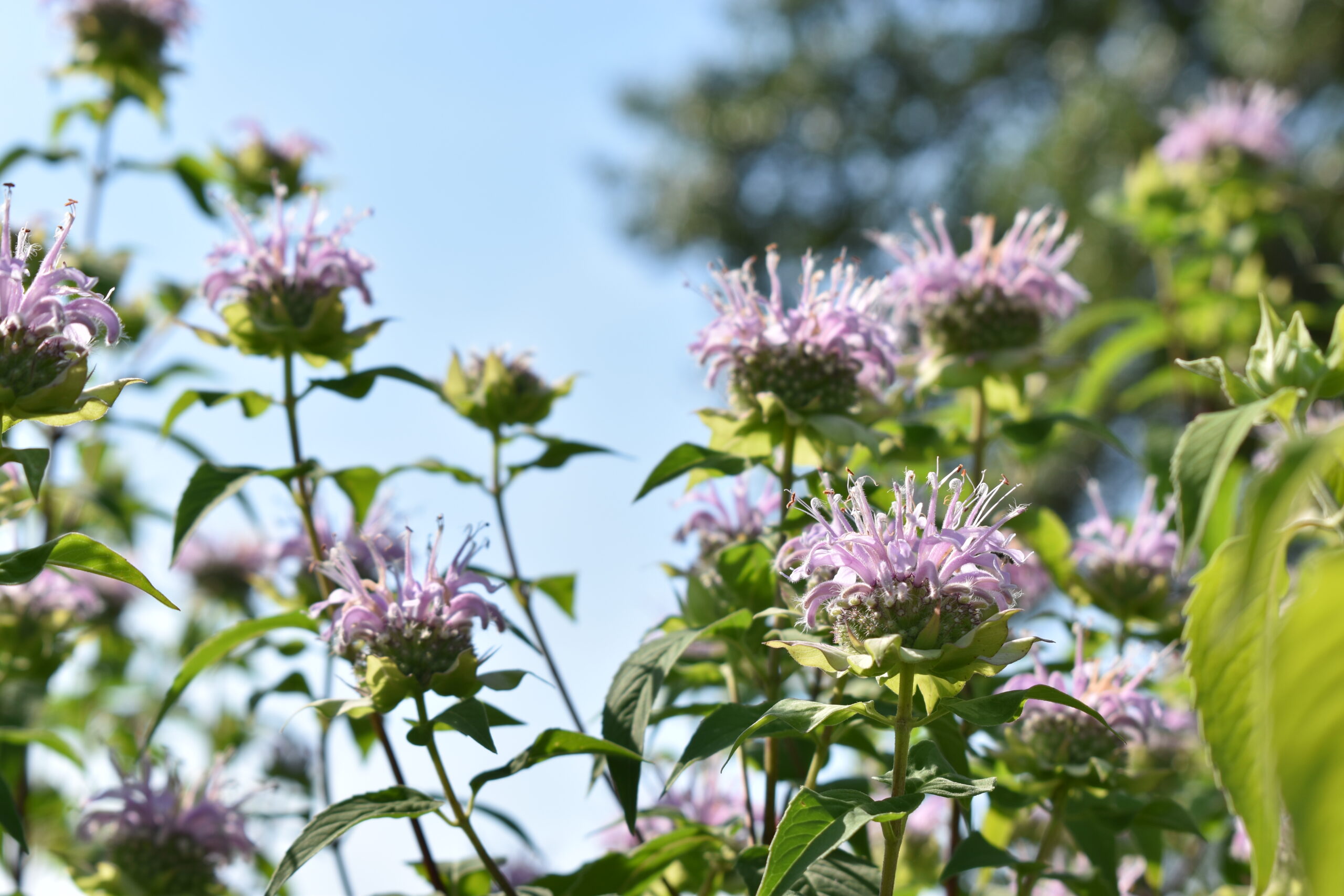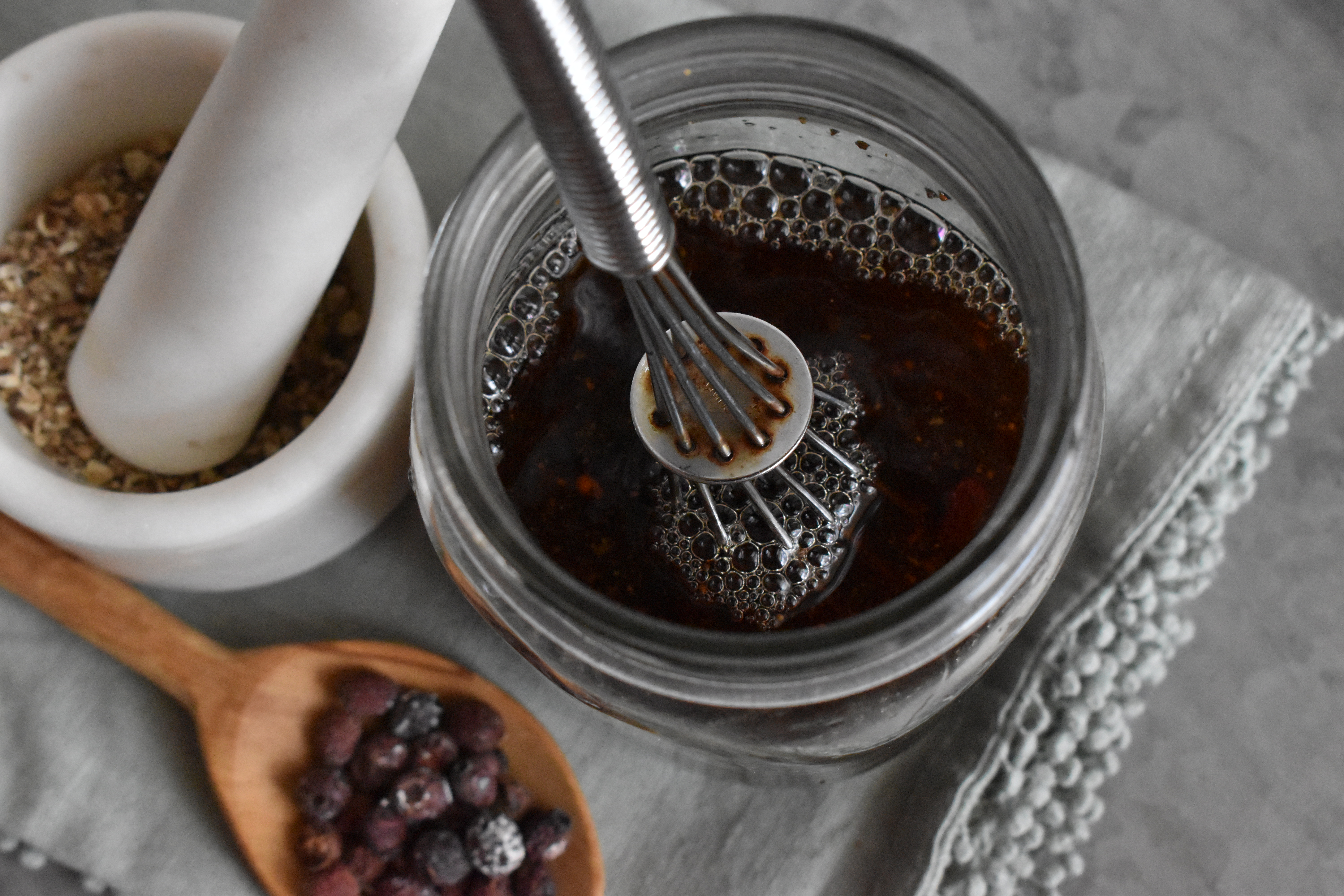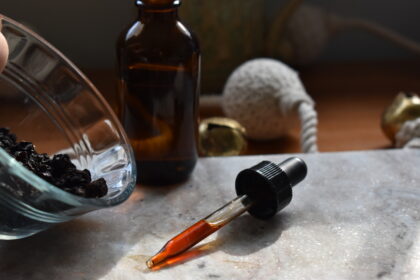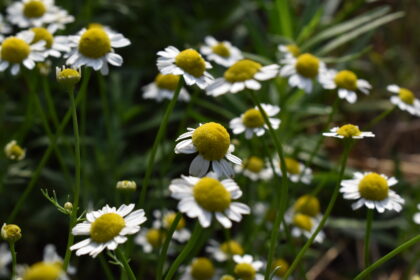Herbs have a long record of safe use that spans thousands of years, but there are still some important guidelines that herbalists follow. Learn about seven herbal safety guidelines that will help you use herbs safely and effectively. Listen to the podcast and find the show notes below!
Clay tablets from the ancient civilization of Sumer hold the oldest recorded herbal inscription currently known to exist. These tablets are around 5,000 years old. Archaeological research has indicated that the actual use of herbs goes much farther back, at least 8,000 years ago in ancient China and perhaps as long as 60,000 years ago in the Middle East.
That history is a remarkable testament to the beautiful relationship between humans and plants. It’s a relationship that changed and evolved over decades, centuries and millennia. It’s a relationship that changed in response to politics, wars, cultural shifts, religion, philosophy, science and all of the other factors that go along with being human. It continues to change even now. Herbalism has been both an oral tradition, and something carefully recorded for posterity.
Context and herbal safety
Modern humans no longer get most of their information from clay tablets, papyrus scrolls, or medieval manuscripts. Instead, we often turn to the internet. And we often look for the fastest, easiest options when selecting the information to answer our questions. With something as complex and richly storied as herbalism, we are doing ourselves a disservice if we stop with the easy answers. We also lose important information without the context of an oral tradition.
One of the biggest problems regarding easy information without context: there’s no framework to guide mindful, appropriate use. So today, let’s dig a little deeper into what modern herbalists know about the safe, thoughtful use of plants to support wellbeing.
Welcome to the Teacup Alchemy podcast! I’m herbalist and author Agatha Noveille.
7 important herbal safety topics
There is a common misconception that herbs are natural, so they must be safe. The truth is more nuanced. There are poisonous plants, of course – those are obviously natural but not safe. But plants that are safe for one person may not be safe for another person. This can be true because of allergies, or because people are in different life stages, or because of pre-existing health conditions.
Due to these potential variations, It’s important to know seven topics regarding herbal safety so you can make informed decisions for yourself.
The seven topics cover
- relative botanical strength and safety
- which parts of a plant are used and how to prepare it
- considerations for special populations
- determining individual serving size
- potential allergies
- herb/drug interactions
- known or theoretical problems with use
Relative safety of a botanical
The first topic to consider is relative botanical strength and safety. By relative, I mean that some herbs are more or less potent when compared to other herbs or to foods. It helps to imagine it as a spectrum with generally safe herbs at one end, and highly toxic plants on the other.
Some herbs are mild enough that they can also be eaten as food. Dandelions are a perfect example of a very mild herb. Most people can either use dandelions as an herbal tea or extract, or enjoy eating dandelion leaves in a salad or cooked as greens without any special preparation. Burdock root is another example of herb that is often eaten as a food.
At the very opposite end of the herbal spectrum are low-dose botanicals.These herbs have an important traditional record of use, but there are very specific rules about using them. A few drops of very carefully prepared extracts or infusions are all that is needed, and the circumstances of when they should be used is carefully defined.
Most herbs fall somewhere in the middle, but it’s important to be aware of the range and where the herbs you use fall on the spectrum.
Parts used and preparation
Next, you need to know what parts of a plant to use and how to prepare it. If we think about a spectrum again, most plants have a range of acceptable preparations – fresh or dried and prepared a number of different ways. However, a few plants fall outside of this spectrum and it’s good to know.
An example here is garden sage (Salvia officinalis). Even though it’s used as a cooking spice, using sage as an herbal tea requires a little extra knowledge. Sage contains an oil called thujone, which has the potential to be toxic to the liver. Traditionally, sage leaves were gathered in spring and dried for later use – two practices which limit the amount of thujone in the final tea. A water based preparation of sage like tea will also contain less thujone than an alcohol based extract.
Going back to relative botanical safety, we could also describe sage on the scale of potentially toxic plants and might limit the use of sage tea to a few days or occasional use only.
Considerations for special populations
So we’ve looked at relative safety and safe preparation. It’s also true that a safe herb for one person may not be safe for someone else. One reason for this can be their stage in life. People at different stages in life have different health needs based on whether they are still growing and developing, where they are with reproductive health, and whether they are experiencing age-related health challenges.
In other words, a child will have different herbal safety needs than an adult. Some herbs that are safe for adults may not be a good choice for children, such as adaptogens that support healthy endocrine function.
Elders also have their own potential considerations. They may be more likely to have pre-existing conditions or take prescription medications and may have slower metabolisms that are more sensitive to herbs.
Herbal safety during pregnancy
Pregnancy is a big consideration here. I defer to herbalist, midwife, and MD Aviva Romm for all things pregnancy and birth related. According to Dr. Romm, it’s best to avoid all herbs in the first trimester. After that, only use herbs that have a good record of safety during pregnancy.
Herbs that should definitely be avoided include
- harsh, stimulating laxatives (like cascara or senna)
- herbs used to support healthy menstrual flow or classified as herbs that move the blood (examples include yarrow, angelica, and mugwort)
- Plants with potentially problematic alkaloids like coltsfoot, comfrey, and borage
- Botanicals with high levels of phytoestrogens like red clover and hops
I wish that there was a list of hard and fast rules, but the best way to use herbs safely is to remember that you are an individual! If you ever have a question about herbal safety in a specific situation, consult your personal healthcare providers and a knowledgeable herbalist for more information.
Know the correct serving sizes
This brings us to another topic: knowing the correct serving sizes. Depending on someone’s size, life stage, and personal metabolism, they may need more or less of an herb than another person. Always research the suggested serving size for any herb you plan to use. This information should be easy to find in herb books that feature profiles about individual herbs (also known as monographs or materia medica).
Knowing the length of time an herb can be used on a daily basis is important too. Some herbs, like adaptogens, are perfectly fine for daily use and might even be best used that way. Other plants might be fine for a week or two at the most, or are best used for only a few days at a time.This goes back to what we discussed in knowing relative strength and safety.
Be aware of potential allergies
If you have food allergies or pollen allergies you may know this already, but many people don’t realize that plants are grouped into families of more or less related plants. If you have an allergy to a specific plant, you may be more likely to have an allergy to a plant that is closely related.
You can also develop something called oral allergy syndrome if you have pollen allergies.Oral allergy syndrome is a cross-reactivity caused by similarities in the pollen proteins with proteins in plants that aren’t related. Some examples are having an itchy mouth and throat after eating parsley if you are allergic to birch pollen. Mugwort pollen allergies may be particularly problematic, as they can cause cross-reactivity with garlic, parsley, fennel, or coriander.
If you have any known allergies to pollen or plants of any kind, it’s a good idea to research what herbs are in the same family or that may cause cross-reactivity.
Be aware of this plant family
Asteraceae family plants have a reputation as one of the most potentially allergic plants. Ragweed is an asteracea, and so are many herbs like chamomile and yarrow. Asteracea are also among the most common plants to cause contact dermatitis in the garden or when used topically or in bath and beauty products.
Just as with foods, it’s possible for any individual to have a unique allergy to an herb. In my experiences as an herbalist, it doesn’t happen often. However knowing that it can and being aware is still an important aspect of informed herbal safety.
Consider herb/drug interactions
It’s also important to know that herbs may interact with prescription or over-the-counter medications. Use caution when it comes to potential herb/drug interactions. Do your research and talk with your doctor before using herbs if you take medication.
There are a few good reasons for this. For example, herbs may support healthy liver and kidney function. The liver and kidneys are two of the main pathways for medications to be eliminated from the body. An herb that has the potential to act as a diuretic (even ones like the mild dandelion greens we mentioned earlier) may make you pee out more of your medication than usual or stress your kidneys if you medication is already hard on the kidneys.
The liver is another important aspect of the metabolism when you take medications. Some herbs are more likely to increase enzyme production in the liver. This can change how quickly your liver processes your medication.
Herbs and metabolism
So herbs can have an influence on how quickly your body flushes prescription drugs out of your system, make a drug act more strongly in your body, or interfere with what the drug is meant to accomplish. There is still a lot of research that needs to be done in this area. A good herbal reference book can help you start a discussion with your doctor or pharmacist if you want to use herbs but are taking prescription medications.
Known or theoretical problems with use
In addition to knowing about the potential for herb/drug interactions, other considerations can include pre-existing medical conditions. Some herbs may not be a good idea for someone with known heart, liver, or kidney problems. Herbs are generally well tolerated by a wide range of people. But it’s still good to know the basics of how herbs support the health of specific organ systems and whether they may stress an organ system that is already struggling.
An example would be diuretic herbs. There are actually several categories of diuretic herbs. Some of them, like cornsilk, are gentle and moistening. However, other diuretics, like juniper berry, may be irritating for some individuals. If there’s already irritation and inflammation or compromised kidney function, juniper may not be the best choice.
Many problems with known or theoretical problems can be avoided by learning how herbalists classify herbs within a category and how we look at a person’s overall constitution. Taking into account the tendencies of the herb and the general patterns of an individual go a long way for better herbal matchmaking.
More specific known or theoretical problems with use can also be found by consulting a good herbal reference book or by talking with an experienced herbalist.
Closing
The seven topics we discussed today will give you a good orientation for using herbs safely and effectively. It’s wonderful that we have both tradition and science to support us as we move forward with herbs. I’ll include links with more articles and resources to herbal safety in the show notes on teacupalchemy.com, so be sure to stop by and take a look.
Teacup Alchemy is produced by herbalist Agatha Noveille as a community resource for quality, trusted herbal information. We are listener/reader supported! If you love the podcast and blog, consider becoming a Patron to unlock extra podcast episodes and blog articles. You can also find our tip jar at ko-fi.com/teacupalchemy.
Thank you for listening and supporting our work!
More resources for herbal safety
Find more information on common herbal safety topics below.
Read Dr. Aviva Romm’s article on herbs and pregnancy.
Browse my list of excellent herbal books on Indie Herbalist. I love reading and reviewing high quality books. Building a good herbal reference library at home is important. I update the list often!
Here’s a chart about oral allergies.
Listen to the Teacup Alchemy podcast
Find all of our open access shows here, and become a Patron to unlock extra podcast episodes and blog articles.
A freelance writer and herbalist since 2011, Agatha is dedicated to creating an online reader and listener supported platform supporting her work as an herbalist. Her focus in herbalism includes sustainable agriculture, community wellness and accessibility, and botanical conservation.
